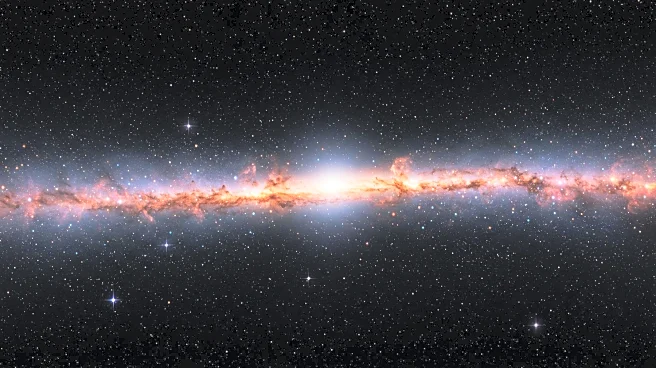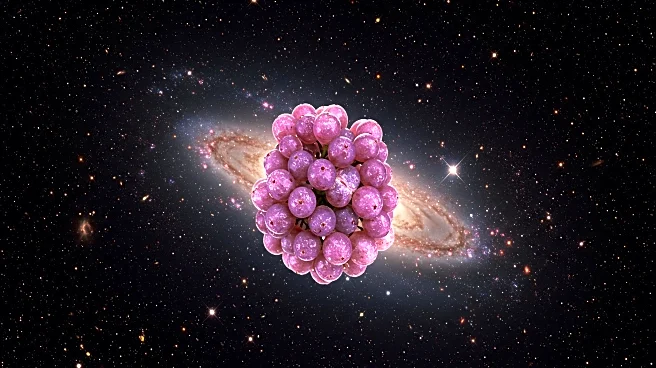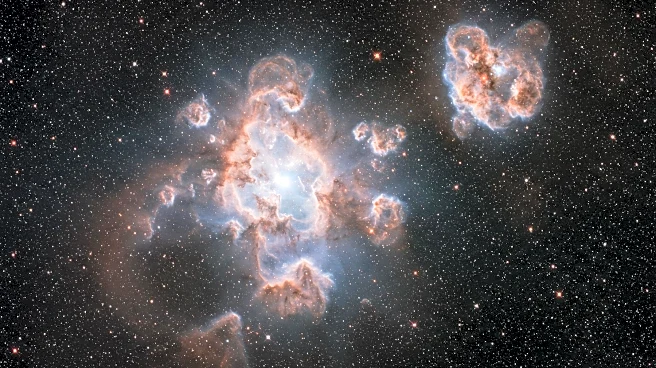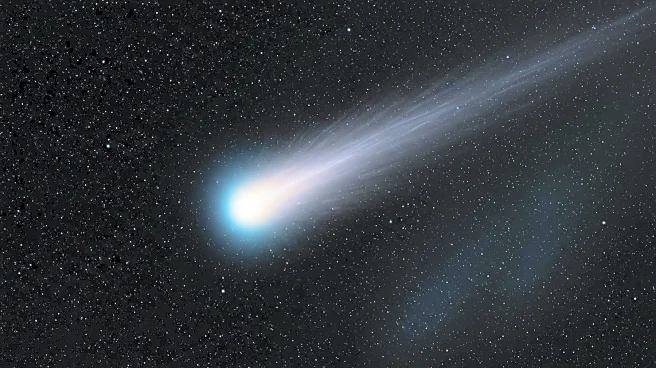Rapid Read • 8 min read
Astronomers from the University of Chicago have identified a new ultra-metal-poor star, designated GDR3_526285, in the Milky Way's halo. This discovery was made using data from ESA's Gaia satellite and confirmed through multi-band photometry and high-resolution spectroscopic analysis at the Magellan Clay 6.5 m telescope in Chile. Ultra-metal-poor stars, with iron abundances below -4, are rare and believed to be descendants of the first stars, offering insights into early universe conditions. GDR3_526285 is located approximately 78,600 light years from Earth and has one of the lowest iron abundances ever measured, at -4.82 dex.
AD
The discovery of GDR3_526285 is significant as it provides a rare opportunity to study the conditions of the early universe. Ultra-metal-poor stars are considered remnants of the first stars, known as Population III stars, and can offer valuable information about the formation and evolution of galaxies. Understanding these stars helps astronomers piece together the history of the universe and the processes that led to the creation of elements. The star's low metallicity and unique characteristics may also shed light on the dynamics of the Milky Way and its interactions with satellite galaxies.
Researchers will continue to study GDR3_526285 to better understand its formation and characteristics. Further analysis may reveal more about its association with the Magellanic Clouds and its role in the Milky Way's halo. The findings could lead to new insights into the processes that govern star formation and the evolution of galaxies. Additionally, astronomers may use similar methods to identify other ultra-metal-poor stars, expanding our knowledge of the early universe.
The discovery of GDR3_526285 highlights the importance of advanced astronomical tools and international collaboration in uncovering the mysteries of the universe. The use of Gaia's spectro-photometric catalog and high-resolution spectroscopy demonstrates the technological advancements that enable such discoveries. This research also underscores the significance of preserving and studying ancient celestial objects to understand the universe's history and evolution.
AD
More Stories You Might Enjoy











